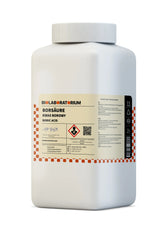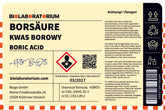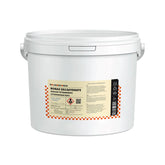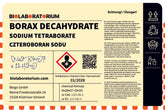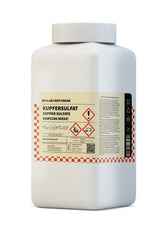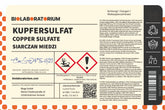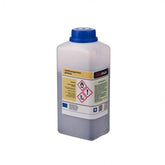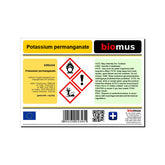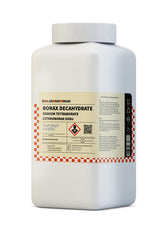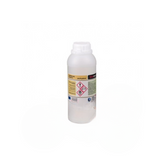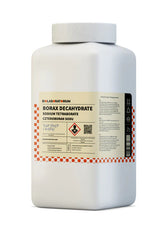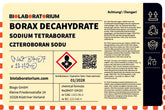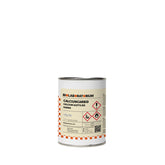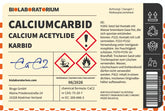Periodic acid – A strong oxidizing agent of central importance in chemical analysis
Periodic acid, also known as metaperiodic acid or orthoperiodic acid, is a chemical compound with the molecular formula HIO₄. It is a strong oxidizing agent that finds diverse applications in chemical analysis. In this blog post, we will take an in-depth look at the properties, uses, and safety aspects of periodic acid.
The structure and properties of periodic acid
Periodic acid belongs to the group of halogen acids and is structurally related to sulfuric acid (H₂SO₄). The iodine atom is surrounded by four oxygen atoms at the center of the molecule, resulting in a tetrahedral geometry. The oxidation state of iodine in periodic acid is +7, making it a highly reactive oxidizing agent.
Periodic acid is highly soluble in water and forms a colorless, slightly viscous solution. It is a strong acid with a pKa value of 0.8, meaning it is largely dissociated in aqueous solution. Due to its high reactivity, periodic acid must always be handled in compliance with safety regulations.
Applications of periodic acid in chemical analysis
Periodic acid finds diverse uses in chemical analysis, particularly in redox reactions and oxidation processes. Some of the most important applications are:
Determination of aldehydes and ketones
Periodic acid can be used for the selective oxidation of aldehydes to carboxylic acids. This process is known as periodate oxidation and is an important analytical method in organic chemistry. By measuring the consumed oxidizing agent, the concentration of the aldehyde can be quantified.
Analysis of sugars and carbohydrates
Periodic acid reacts with diols, i.e., compounds with two adjacent hydroxyl groups, cleaving the carbon-carbon bond. This reaction is used for the determination of sugars and carbohydrates, as these often contain such diol structures.
Determination of amino acids and proteins
Periodic acid can also be used for the analysis of amino acids and proteins. It selectively oxidizes the side chains of certain amino acids such as serine, threonine, and cysteine, which can be utilized for quantitative determinations.
Oxidative cleavage of glycols
Periodic acid is used for the oxidative cleavage of glycols, i.e., compounds with two hydroxyl groups on adjacent carbon atoms. This produces aldehydes or ketones, which can in turn be used for further analyses.
Iodate-iodite titration
In redox titrimetry, periodic acid is frequently used as an oxidizing agent. Here, periodic acid is reduced to iodide, which can then be titrated with a thiosulfate solution. This iodate-iodite titration is an important analytical method in chemistry.
Safety aspects when using periodic acid
As mentioned, periodic acid must be handled with caution due to its high reactivity. It is a strong oxidizing agent and can react violently upon contact with organic substances or reducing agents. Therefore, applicable safety regulations must always be observed during storage and use of periodic acid.
In particular, appropriate personal protective equipment (PPE) such as safety glasses, gloves, and lab coats must be worn. Periodic acid should always be used in well-ventilated areas and on chemical-resistant work surfaces. Spills must be immediately absorbed and disposed of using suitable materials.
Furthermore, caution is required when disposing of waste containing periodic acid. It must not enter the sewage system or environment but must be disposed of as special waste in accordance with applicable regulations.
Conclusion
Periodic acid is a versatile and powerful oxidizing agent that plays a central role in chemical analysis. Its ability to react selectively with certain functional groups makes it a valuable tool for the determination and characterization of a wide range of compounds.
However, handling periodic acid requires special safety measures due to its high reactivity. Only through careful handling and adherence to regulations can the risk of accidents or damage be minimized.
Overall, periodic acid is an important component of the analytical toolkit in chemistry laboratories and industrial research facilities. Its use enables precise analyses and quantifications that are indispensable for many applications in science and technology.

